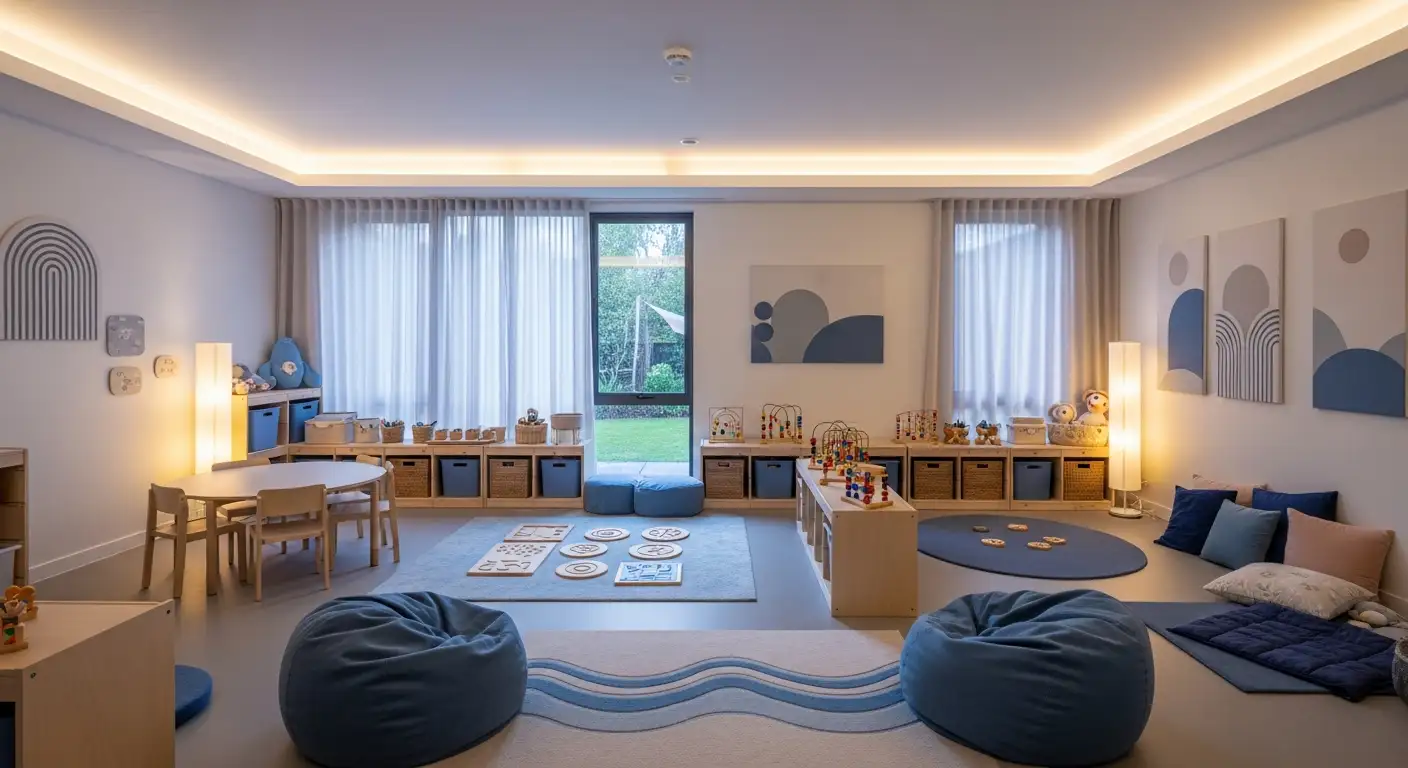Understanding PECS
The Picture Exchange Communication System (PECS) is a vital tool in the world of speech therapy. Designed to aid individuals, particularly those with autism spectrum disorder, in their communication development, it has proven to be an effective and widely recognized augmentative and alternative communication (AAC) system.

Evolution of PECS
PECS was developed in the late 1980s by Andy Bondy and Lori Frost, primarily for use with preschool children with autism and other related developmental disabilities. Over time, its usage has expanded, becoming a key communication tool for individuals of all ages.
PECS involves the use of a communication book or a set of picture cards, representing various objects, actions, and concepts. This visual system allows individuals to initiate communication and effectively convey messages [1].
Benefits of PECS
The benefits of using PECS for speech therapy are manifold. For one, it significantly improves an individual's overall communication skills by using visual symbols to express wants, needs, and thoughts, thereby promoting the development of receptive and expressive language skills.
In addition, PECS communication empowers individuals by promoting their independence and autonomy. It allows them to make choices, express preferences, and actively participate in daily activities, fostering self-confidence and self-advocacy [1].
A third key benefit of PECS is its role in fostering social interaction and connection. It encourages individuals to engage and communicate with others, initiate conversations, share information, and establish meaningful connections with peers, family, and friends.
Lastly, according to a meta-analysis by Hart and Banda (2010), teaching PECS increased functional communication for all but one participant. The basic PECS procedure incorporates motivating operations (MO) for teaching requests, thereby increasing the likelihood of the individual engaging in the exchange to access items. This shows the evidence-based success of PECS in enhancing communication skills.
In conclusion, understanding the evolution and benefits of PECS is the first step in harnessing the potential of this powerful tool. In the next sections, we will delve deeper into the practical application and effectiveness of PECS in the realm of speech therapy.
Implementing PECS

The Picture Exchange Communication System (PECS) is a powerful tool that can significantly improve the communication skills of children with autism. It provides a tangible, visual means of communication that can be tailored to the individual's abilities and interests. Implementing PECS involves understanding its various phases and how to apply them practically.
Phases of PECS
PECS is taught in six distinct phases, each with a specific goal and purpose. This step-by-step approach ensures that the child gradually builds up their communication skills in a structured and supportive manner.
- Phase 1: The child learns to exchange a picture for a desired item.
- Phase 2: The child learns to generalize this skill in different situations with different people.
- Phase 3: The child learns to discriminate between different pictures and select the one that represents the item they desire.
- Phase 4: The child learns to construct simple sentences using an "I want" sentence strip.
- Phase 5: The child learns to respond to the question, "What do you want?"
- Phase 6: The child learns to comment on their environment.
In a study by NCBI, 79% of children learned to use the system functionally and reached Phase 6 (commenting). It was also noted that children often began to use spoken language once they reached Phase 4.
Practical Application
The practical application of PECS involves the use of a communication book or a set of picture cards representing various objects, actions, and concepts. These pecs communication cards allow individuals to initiate communication and convey messages effectively.
It's important to start with pictures that represent items or activities that are highly desirable to the individual. This will motivate them to use the system. As the individual's skills progress, the pictures can be expanded to include a wider range of concepts and ideas.
PECS can be used in all sorts of environments and situations, from home to school to community outings. The key is to integrate it naturally into the individual's daily routines and activities, making communication a regular part of their day. This might involve using a pecs schedule board to indicate the sequence of activities for the day or using individual picture cards to request specific items or activities.
Remember, implementing PECS is a process, and progress may be slow at times. Patience, consistency, and positive reinforcement are key. With time and practice, PECS can become a valuable part of an individual's communication toolkit, enhancing their ability to express themselves and engage with the world around them.
Effectiveness of PECS

The Picture Exchange Communication System (PECS) has been extensively researched for its effectiveness in facilitating communication in children with autism spectrum disorders (ASD). This section will discuss the research findings pertaining to PECS and compare it with other interventions.
Research Findings
PECS has demonstrated promising results in facilitating communication in children with ASD ages 1-11 years. Although the gains in speech were small to negative, the system showed small to moderate gains in communication.
In a study conducted by Schreibman and Stahmer (2014), children with autism who had fewer than 10 spoken words acquired about 90 spoken words on average after 6 months of intervention, and about 120 spoken words after 9 months [3].
According to a meta-analysis by Hart and Banda (2010), all but one participant saw an increase in functional communication when taught PECS.
Comparison Studies
When PECS is compared with other empirically supported interventions such as Pivotal Response Training (PRT), it demonstrates similar effectiveness. Both interventions have shown improvements in speech imitation, labeling, spontaneous speech, and rapid acquisition of functional speech in nonverbal children with autism [5].
A randomized comparison study of PECS and a verbally-based naturalistic intervention (RPMT) found that, on average, PECS was superior to RPMT for improving children's spoken communication and spoken language. However, the results varied depending on child characteristics, further indicating the need for more data [5].
In a study comparing PECS and PRT for young, minimally verbal children with autism, both interventions resulted in similar gains in spoken communication. On average, children in both the PRT and PECS conditions made approximately 80 spoken words progress over a 6-month study period.
The effectiveness of PECS in facilitating communication in children with autism is evident from the research findings. The system's comparative success with other interventions further strengthens the case for its use in speech therapy. However, as with any intervention, the individual child's characteristics and needs should be considered when choosing the most suitable communication system.
Importance of PECS
The Picture Exchange Communication System (PECS) plays a valuable role in facilitating communication for individuals with autism spectrum disorders (ASD). Through this system, individuals can express their wants, needs, and thoughts, which is particularly useful for those with limited or unclear speech. Let's delve into two critical areas where the PECS makes a significant impact - communication development and speech enhancement.
Communication Development
PECS significantly improves an individual's overall communication skills by using visual symbols. This method promotes the development of receptive and expressive language skills, enabling a child to communicate effectively with other people [1]. According to Kid Sense Child Development, it is especially beneficial for children who are non-verbal, have limited or unclear speech, and do not use a functional communication system in their environment.
PECS has been successful with individuals of all ages demonstrating a variety of communicative, cognitive, and physical difficulties. Thus, it underlines the potential of PECS communication system in fostering communication development.
Speech Enhancement
Although the gains in speech from using PECS were found to be small to negative, according to PubMed, therapeutic intervention can lead to the development of speech in some learners using PECS.
Furthermore, a study by Schreibman and Stahmer (2014), as reported by ASAT, showed that after 6 months of intervention, 2.5-year-old children with autism who had fewer than 10 spoken words acquired about 90 spoken words on average, and about 120 spoken words after 9 months. This highlights the potential of PECS in improving spoken language.
In addition, both PECS and Pivotal Response Training (PRT) are empirically supported interventions for teaching communication skills to children with autism. While PECS involves exchanging picture icons to communicate, PRT focuses on developing functional spoken language. Both interventions have shown effectiveness in improving speech imitation, labeling, spontaneous speech, and rapid acquisition of functional speech in nonverbal children with autism.
In conclusion, through the combined efforts of communication development and speech enhancement, the use of PECS for speech therapy can be instrumental in empowering individuals with autism to express themselves more effectively. This not only fosters personal growth but also promotes a positive social environment for these individuals.
Learning Challenges with PECS
While the Picture Exchange Communication System (PECS) offers significant potential for enhancing communication and speech development, like any therapeutic intervention, it comes with its own set of challenges. The main obstacles often revolve around parental involvement and the need for consultation with a speech therapist.
Parental Involvement
PECS is designed to be implemented across various environments, making parental involvement crucial for its success. Parents need to consistently use and reinforce the use of PECS communication cards and the PECS schedule board at home. However, according to a study by NCBI, parents have found PECS to be more difficult to implement at home compared to other interventions.
The main challenges for parents include understanding the principles of PECS, applying it consistently, and integrating it into daily routines. Despite these hurdles, parents have reported satisfaction with both PRT and PECS interventions, with moderate overall improvement in areas of communication, self-help skills, and behavior.
Speech Therapist Consultation
Given the complexities and nuances of the picture exchange communication system, consultation with a speech therapist is highly recommended. These professionals have the expertise and experience to guide the child's PECS journey effectively.
Therapeutic intervention is important in mastering PECS and can even lead to the development of speech in some learners using PECS, as shared by Kid Sense Child Development. The same source also recommends Occupational Therapy in cases where there are multiple areas of concern.
Speech therapists can also help parents understand how to use PECS effectively, providing them with the necessary tools and strategies to support their child's communication development.
Schreibman and Stahmer (2014), as cited by ASAT, conducted a study showing that after 6 months of intervention, 2.5-year-old children with autism who had fewer than 10 spoken words acquired about 90 spoken words on average, and about 120 spoken words after 9 months. This demonstrates the effectiveness of PECS in improving spoken language when implemented correctly.
While the learning challenges with PECS may seem daunting, the benefits it offers in enhancing communication skills make it a valuable tool in speech therapy. With the right guidance and support, children and families can successfully navigate these challenges and unlock the full potential of PECS.
Future of PECS
The Picture Exchange Communication System (PECS) has an important role in the development of communication skills for children with autism. This innovative system continues to evolve, pushing the boundaries in providing effective communication tools.
Continuous Improvement
PECS has proven to be an effective tool in enhancing communication abilities, and its success has prompted ongoing research and improvement. From initial implementation to advanced phases, PECS has shown promise in increasing functional communication and prompting spoken language.
The system’s continuous improvement is a testament to the dedication and commitment of professionals in the field to offer better communication solutions for individuals with autism. As more research is conducted, we can expect further refining and enhancement of the PECS system, making it a more effective and efficient tool for communication.
Potential Impact
The potential impact of PECS for speech therapy is significant. As per a review by Preston and Carter (2009), there is preliminary support for PECS as a communication modality for children and adults with autism spectrum disorder (ASD) and intellectual and developmental disabilities (IDD) who have little or no vocal verbal language.
Additionally, Schreibman and Stahmer's (2014) study demonstrates the effectiveness of PECS in improving spoken language. After 6 months of intervention, 2.5-year-old children with autism who had fewer than 10 spoken words acquired about 90 spoken words on average, and about 120 spoken words after 9 months [3].
Moreover, a comparison study of PECS and a verbally-based naturalistic intervention (RPMT) found that, on average, PECS was superior to RPMT for improving children's spoken communication and spoken language. The results varied depending on child characteristics, indicating the need for additional data to determine if PECS tends to be superior to other naturalistic behavioral interventions for fostering spoken language in children with autism.
The future of PECS is promising. As more research is conducted and more advancements are made, the potential impact of PECS on children with autism could be even more significant. For more information about PECS, please visit our articles on the picture exchange communication system, pecs communication cards, and pecs schedule board.
References
[1]: https://www.adinaaba.com/post/picture-exchange-communication-system-pecs
[2]: https://childdevelopment.com.au/areas-of-concern/using-speech/picture-exchange-communication-systems-pecs/
[3]: https://asatonline.org/for-parents/becoming-a-savvy-consumer/is-there-science-behind-that-pecs/









